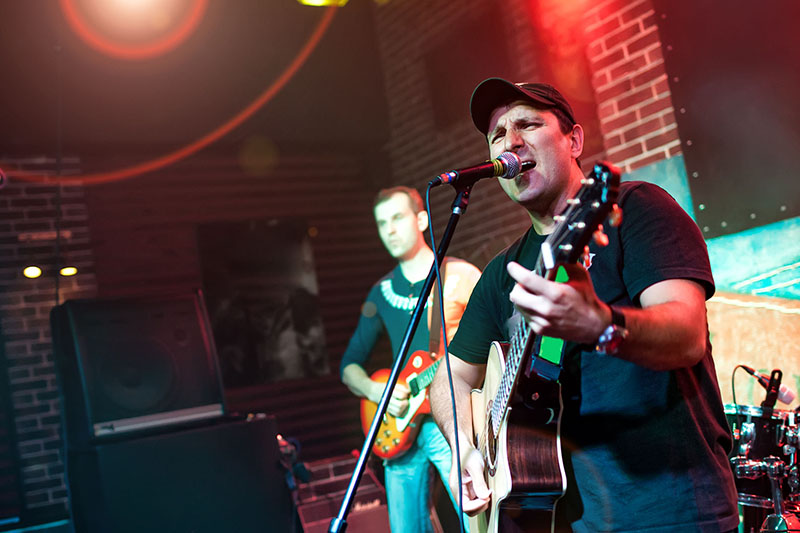“Given a choice, what’s your preferred approach to handling guitar inputs?” It’s an open-ended question, to be sure and on purpose, with our panel of veteran audio professionals stepping up to offer a wide range of ideas and techniques.
Gerard McCorry: Before I make any decisions around handling any guitar inputs, I try to find out what sort of program content I’m dealing with, as my approach varies significantly between, say, a heavy metal band at a club and an acoustic duo for a cocktail evening.
Once that’s been established, I begin a dialog with musicians about their tone and expectation of the sound they want to hear. Often I’m meeting the performer for the first time at sound check, so without this initial conversation, I can’t decide, “Well, tonight the guitar is going to sound like this!” without understanding and respecting their choices.
People often tell me they have a difficult time with loud guitars on stage and I’ve found that it usually comes down to the musician using their own amplifier for monitoring. To get past this issue, I try to angle their amp at their head and find that the volume on stage quickly comes down.
This also usually makes the musician experiment with their tone controls either on their pedals or amp because they’re now on axis with the amp’s speaker and it doesn’t sound how they were expecting.
Another thing to keep in mind is that getting the amp up and off the stage helps to reduce low-frequency buildup and prevents the microphone from picking up reflections from the stage floor.
Once we’ve settled on an appropriate level for self-monitoring (presuming of course that we don’t have a dedicated monitor engineer or are limited in some way regarding monitoring), I move on to mic choice and placement – I deploy the usual suspects (Shure SM57, Sennheiser e906 and MD421, etc.) but anything with a cardioid polar pattern is a safe choice.
The importance of mic placement can’t be overstated and marks the difference between a good and bad engineer. I always take the time to place my chosen mic, then listen in the house, and if I’m not getting what I want, I take the long walk to the stage, reposition and listen again until I find that “sweet spot.” If I’m working with the same band on a tour, once I find that sweet spot, I use some electrical tape and mark it on the amp grille to save time and eliminate another variable as we move from venue to venue.
Short boom stands are an obvious choice but if space on stage is limited, I keep a handful of Z Bars on standby. Whenever working in larger venues, I often use two mics on a cab; one for the mids and the other for the lows. When deploying two mics, make sure they’re the same distance from the source to minimize phase issues, or if you decide to place one further away, be sure to employ delay.
Acoustic guitars are another animal entirely, less forgiving than electrics. If I work with a musician who doesn’t have a pickup installed in the instrument, I see if it’s possible for them to sit when performing. This helps immeasurably with mic placement and consistency. A bigger concern with acoustic guitars is feedback and the sound hole is the primary culprit, so I generally aim the mics either at the bridge or neck pickups while keeping them close so less gain is needed.
Scott Mullane: Let’s face it, guitars are fun to experience roaring through a big PA, making us smile with satisfaction. However, vocals are king and the manipulation of the guitars versus the vocal(s) is critical in a good mix. I almost always try to run stereo guitars while keeping most of the melody instruments out of the center image, leaving space for the vocals. (I’m generalizing here and mainly talking about electric guitars.)
Presently I’m touring with a high-profile rock act. Both guitarists play rhythm and lead at different times and have unique setups:
GTR#1: Single VOX AC30 combo
GTR#2: Two Fender Hot Rod DeVille 4×10 combos
Attaining a stereo image is a matter of creating difference in the sounds of the sources, so for GTR#1 I’m using an Audio-Technica ATM250DE dual-element mic. There’s a dynamic and condenser element housed in a single body, split into two XLR outputs. It’s a single source sound with two very different mics panned left and right. Boom – instant stereo. Not terribly wide, but it gets me out of the center image.
My reasoning for using a single mic body is that given the amp is a single source, if I were to put two different mics on the cabinet and someone bumped, kicked (or whatever) one of the mics, then the phase relationship would be negatively impacted and the sound will suffer.
For GTR#2 I employ a classic approach because there are two independent amps and the guitarist is sending a true stereo signal to them. An SM57 goes on one amp and an e906 is on the other amp. If one of the mics gets knocked, the negative impact is quite minimal compared to the single source cabinet.
The beauty of these two approaches for me is that I need only apply a little high-pass (70 to 100 Hz) and low-pass filtering (4 to 6 kHz), and there’s rarely the need for any additional EQ. The added benefit is that for solos I can simply pan both channels to center, providing some boost due to summation and the solo taking up the center image where the vocal has dropped out. Be careful when panning the stereo sources to mono as there can be negative summation, depending on the sources.




















